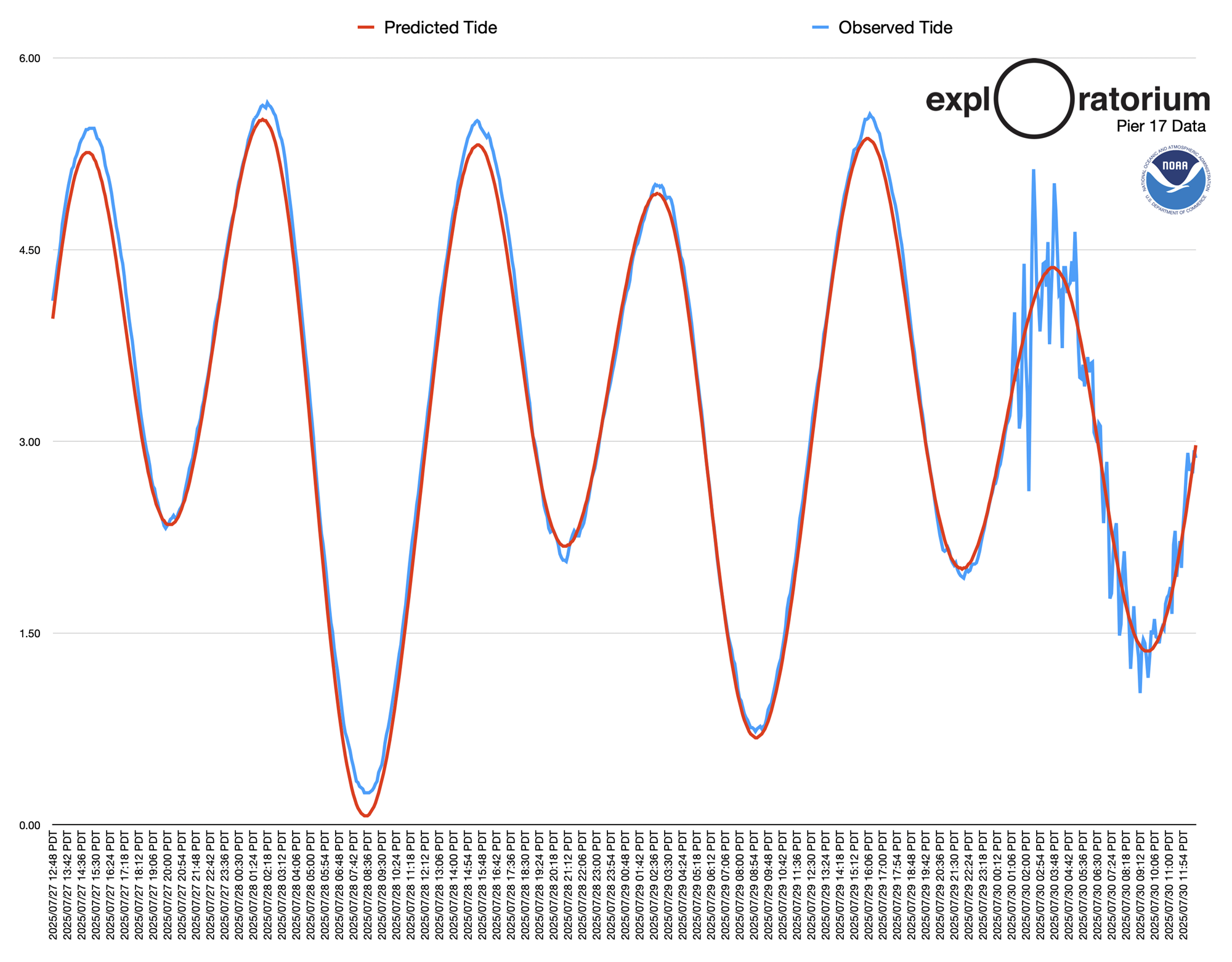Whereas “tsunami” can conjure photographs of towering waves, these swells brought on by quakes are often a lot smaller. On Tuesday evening, the Nationwide Climate Service predicted the waves that will hit San Francisco early Wednesday morning could be lower than a foot excessive, and it has now measured them at 1.2 toes, with no injury reported close to the Bay Space up to now.
So, how unsafe would my kayak journey actually have been?
Consultants say that even puny waves can have a big effect. Lori Dengler, a tsunami professional from Cal Poly Humboldt, stated even when 1 foot sounds manageable, the hazards are hiding within the deep.
“It’s not how excessive the water is, it’s how sturdy that water is flowing out and in,” she stated.
How harmful can these ‘small’ tsunami waves be?
Because it seems, even “small” waves can pose massive hazards.
Dalton Behringer, a meteorologist with the Nationwide Climate Service’s Bay Space workplace, stated {that a} 1-foot swell might sound small, however once you add that foot to regular tide habits, the swings from excessive to low can provide a tsunami that additional push and increase general wave heights a lot larger.

Consider it as not a lot a single wave, Behringer stated, however “as going from a standard low tide to a standard excessive tide,” — and this occurring quick. Such a shift would often occur over six hours, he stated, however in a tsunami, such an increase “occurs over 10 to fifteen minutes,” Behringer stated.
Following the large 2011 earthquake in Japan that despatched 9.0-magnitude shocks throughout the Pacific Ocean, a 1-foot tsunami brought on important injury to boats docked all the way in which in Santa Cruz.
Jim Pruett, normal supervisor of Pillar Level Harbor in Half Moon Bay, stated the primary, second and even third waves from a tsunami shouldn’t be taken frivolously. That’s as a result of tsunamis are extra like highly effective swells than waves and don’t “crash,” that means every wave can do substantial injury.
“It might be solely a 12-inch wave, however there’s a lot of water behind that wave,” Pruett stated. “It’s traveled throughout the Pacific Ocean, and when the swell hits, it doesn’t cease. All that water continues to return in, so it surprises folks.”
In a spot like Pillar Level, which is effectively protected on account of being a pure harbor, small swells like these often solely imply the harbor fills and empties like a tub, Pruett stated. Nonetheless, he suggested all the time to heed warnings from native authorities in the event that they advise staying out of the water, away from seashores or to evacuate.
One other factor to recollect: typically the later tsunami swells are even worse than the preliminary ones, Behringer stated.
“The best [swell] that we’ve seen up to now has come just a few hours after the preliminary wave,” Behringer stated. “With tsunami waves, we are able to see the wave vitality truly construct for a number of hours after the preliminary waves after which dissipate.”
Pamalah MacNeily, proprietor at Blue Waters Kayaking in Tomales Bay, stated she canceled a kayak tour on Wednesday as a precaution, identical to I did. It isn’t the primary time MacNeily’s achieved so after a tsunami warning, both, even when the climate seems good and the bay appears pretty unaffected.
“We now have to be cautious,” she stated. If a tsunami got here in from simply the suitable course, Tomales Bay “could be crushed,” MacNeily stated.
“We now have to be cautious with folks’s lives, and we additionally obey the advisories,” she stated.
What must you do — and never do — when smaller tsunami waves hit?
“Please don’t go and check out to have a look at them,” Dengler stated.
As a substitute, she and others suggested logging on to the Nationwide Oceanic and Atmospheric Administration’s web site to look at the swells, since they’re few and much between — and should not even appear like a lot to the bare eye.
“The sort of tsunami is definitely arriving comparatively slowly,” she stated. “There’s actually nothing dramatic to see.”

